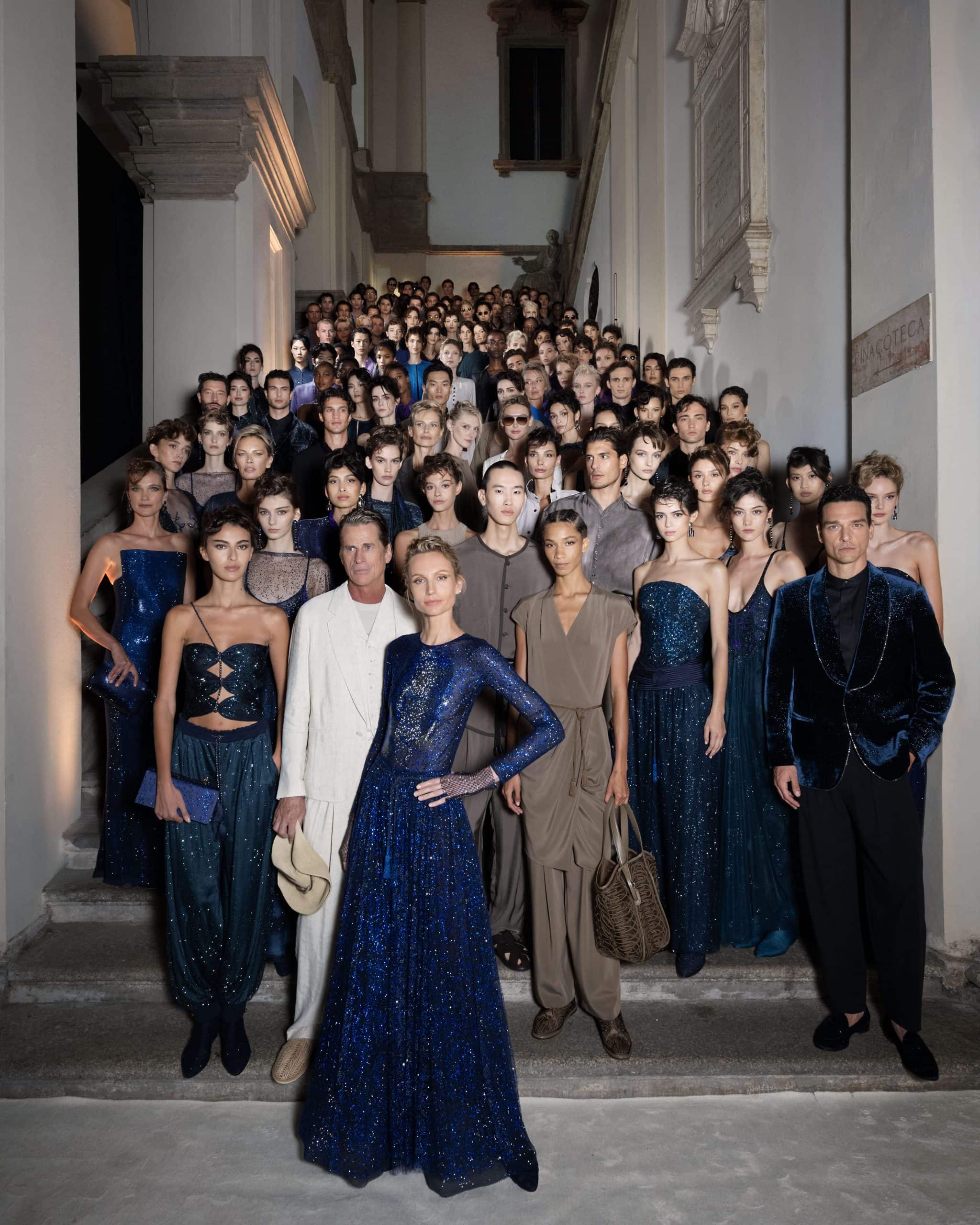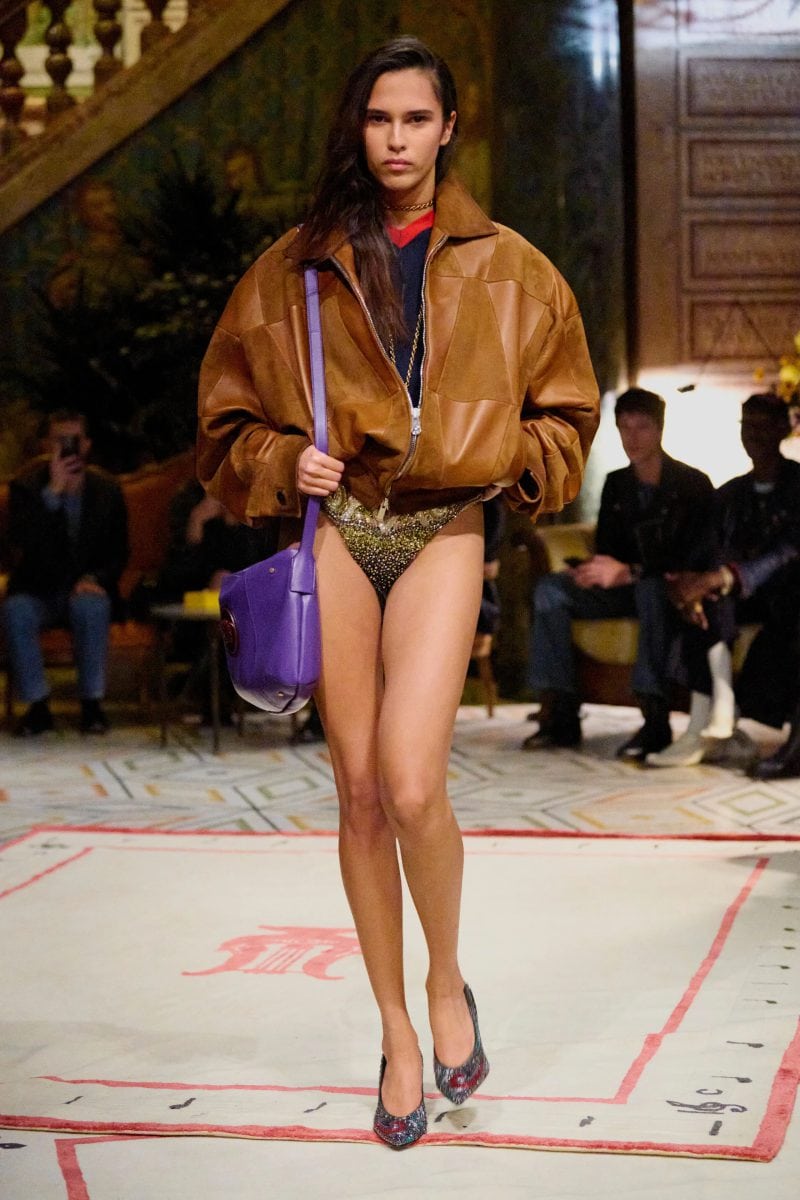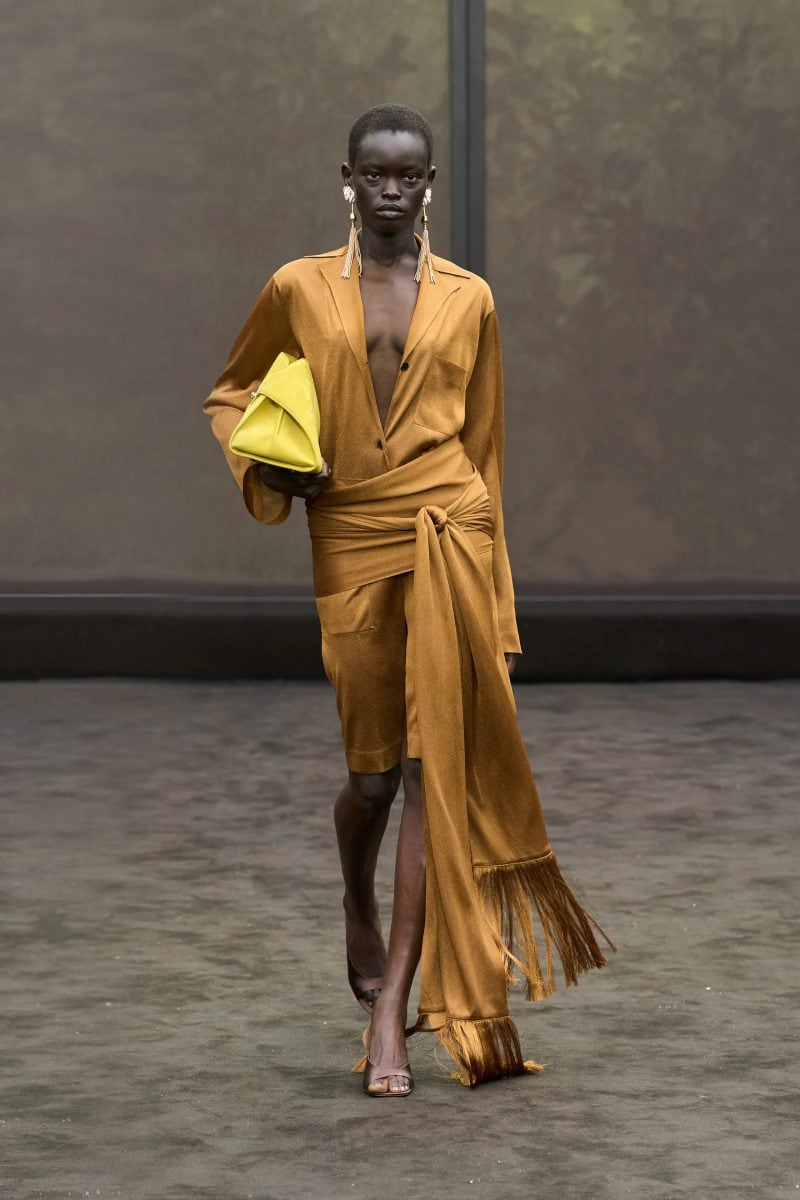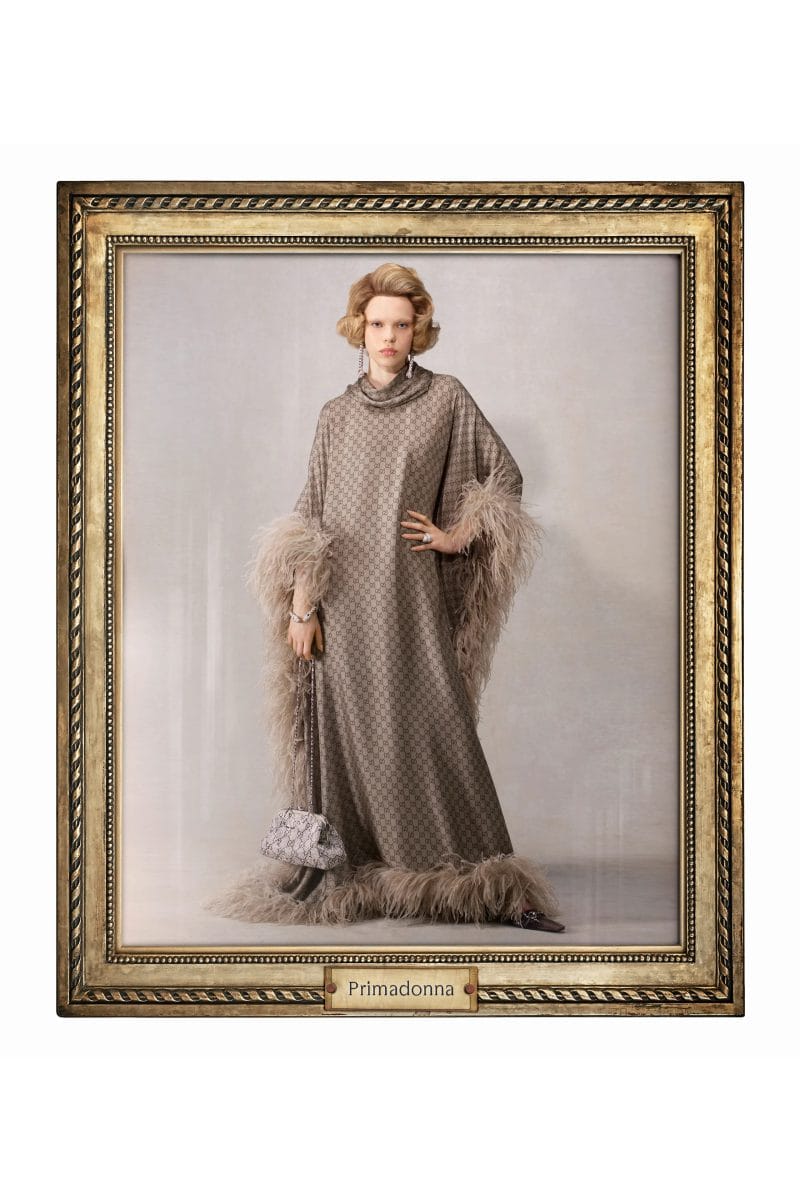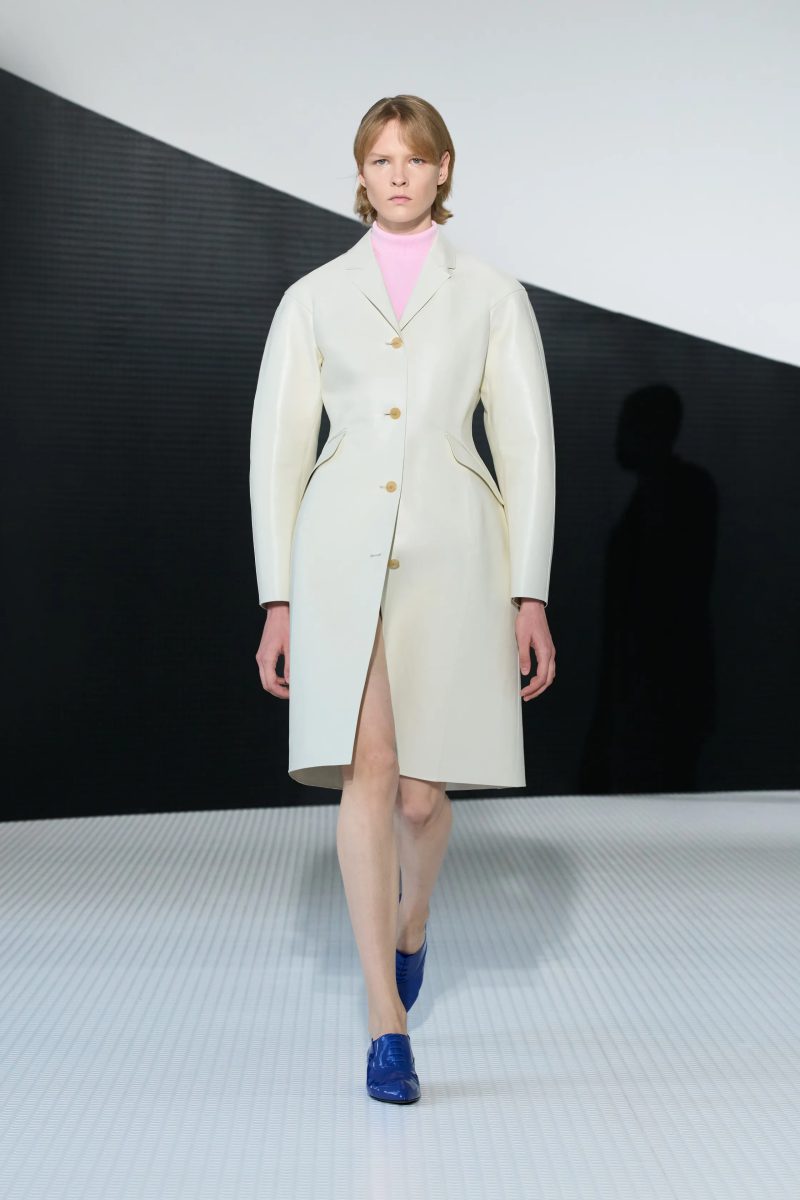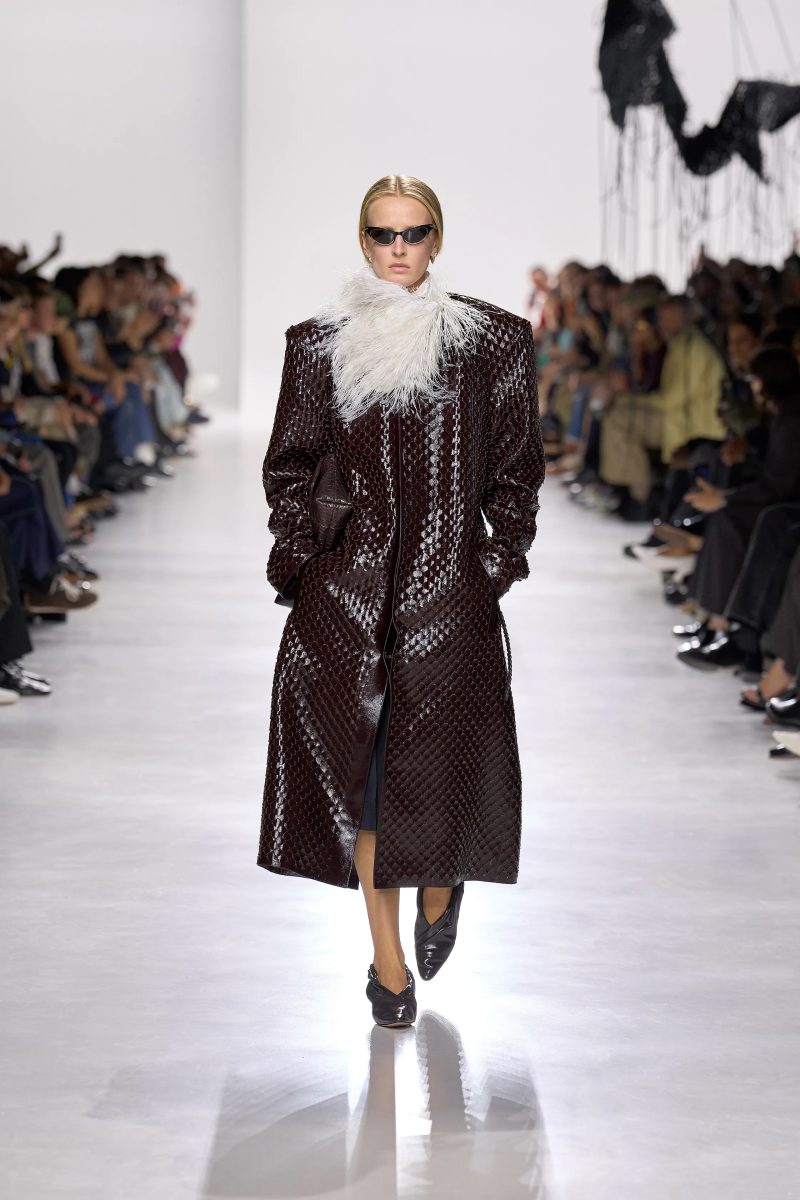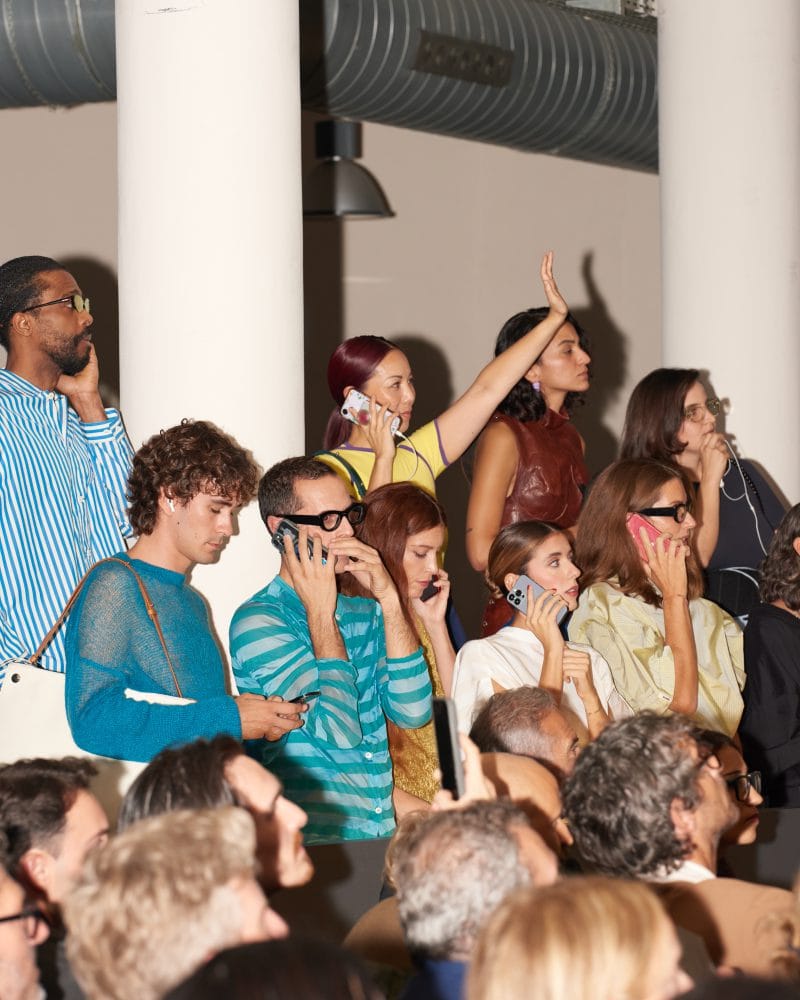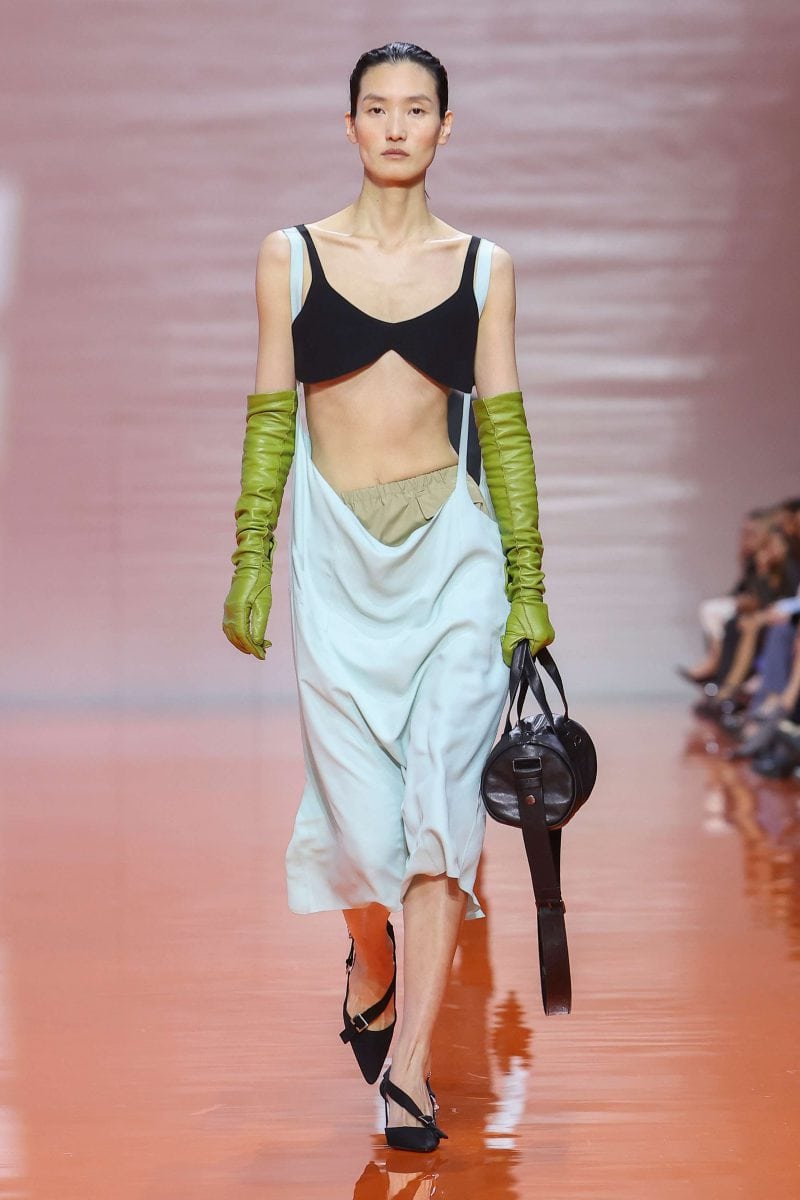As the Spring/Summer 2026 edition of Milan fashion week began on the 23rd of September, the loss of Giorgio Armani and his legendary legacy loomed. Having passed away just under three weeks before the start of the shows, a season that was to be undoubtedly characterized by it’s reinvention (with awaited debuts from Demna at Gucci, Dario Vitale at Versace, Louise Trotter at Bottega Veneta, and Simone Bellotti at Jil Sander), was underscored by a sense of mourning and celebration of the past.
Reinvention through harking back to the past is a well established trope when it comes to young designers taking the reins at legacy fashion houses. A desire to go back to origins in the search of authenticity and truth is a formulaic if not unavoidable way to keep collections on brand, while injecting a designer’s unique perspective. And so, this edition’s dedication to the late designer was an important reminder that what makes fashion so exciting is its capacity to be circular and ascending like a spiral. Milan SS2026 was fashion’s ouroboros, reminding us what we love about it’s storied history, and all we have to look forward to in it’s continual consumption and reinvention of itself.
Day one presented perhaps the most anticipated debut of the season. Demna Gvasalia’s first collection at Gucci broke the mould right from the get go, releasing a 37-look collection named La Famiglia on its Instagram on the eve of their Milan Fashion week presentation. And this was not just any presentation: a film titled ‘The Tiger’, directed by Spike Jonze and Halina Reijn, and starring Demi Moore alongside another co-star: the clothes. The premier was attended to much fanfare, as a number of the film’s stars attended decked out in the collection. The film has been given somewhat mixed reviews, but the collection has been likened to the golden eras of Tom Ford and Alessandro Michele, a good sign for the house which reported struggling figures in it’s last quarter. A clearer picture of Demna’s direction will come in February, as this collection was posited as “the aesthetic base upon which Demna’s Gucci vision will be built up leading to his first show,” according to the press release.
Glenn Martens subverted the classic show format with Diesel this season. There was no runway, but rather an egg hunt across the city, which was touted by Martens as a democratic move to bring fashion to the people. Models wearing the collection stood in giant transparent eggs placed all over the city. The clothes were a reminder of the street-style-esque, experimental language of the brand, always with total wearability. Highlights were innovative materials like x-ray bleached denim and distressed satin.
Jill Sander’s first collection with Simone Bellotti has turned out to be a favorite amongst the Milan debuts. After four seasons as Bally’s former creative director, Bellotti’s assignment with Jil Sander caused charged chatter. The maximalism of the anticipation clashed incredibly with the stark minimalism of Bellotti’s show, which took place at the label’s Piazza Castello headquarters for the first time in eight years. The brands 90s legacy was foreground, with Guinevere Van Seenus as the first model out.s Accentuated tailoring, sheer mesh and geometric cut outs balanced the collection between structure and lightness. An exciting and clean debut for a brand that welcomes a breath of fresh air.
Raf Simons and Miuccia Prada dished up an eclectic and brightly colored look into a wardrobe of old-money dreams, where over-the-elbow length opera gloves, crystal glasses, and dangling earrings are effortlessly combined with unstructured bralettes and looks with contrasting fabrics. This collection appears to celebrate the joy of personal style, as Prada writes ‘juxtaposition here becomes an act of creation’.
In other new directions, the Francesco Murano show detoured from the statuesque and veered towards movement, in a show titled “Kinesis.” As 2025 LVMH prize finalists, the designer appears ready to take up more space, exploring exploded silhouette’s that billowed outwards from the model’s bodies as they stormed down the runway. Harem pants were like sails that caught the breeze, and asymmetrical halter tops and dresses reminded many of us of how our skirts often turn across our bodies, trapped under our bags, as we race across the city.
Going, going, gone! At Sunnei’s staged auction, everything was up for grabs, including a giant Sunnei logo snatched up for $111 million. In an announcement that surprised us all, Sunnei was effectively staging their own exit, telling all moments later online that they were stepping down. We still don’t know all the details, but in the press release, they wrote: “Fashion is finance; creativity is for sale… The Sunnei auction is a stage where the contradictions of the system are enacted, where what’s symbolic challenges what’s real, and desire itself is questioned.”
After Donatella Versace stepped down from the role of creative director, all were wondering about the brand’s future under the new CD Dario Vitale. Mystery and confusion were abound when the house was not included in the initial schedule for Milan fashion week, released in July. But an event was confirmed – by email – for the evening of the 26 of September. Held at the Pinacoteca Ambrosiana, an art gallery housing works by Caravaggio and Titian, the presentation was indeed a runway show outfitted with everyday objects. We were right back to the 80s, with jersey dresses and logo briefs. The show was a hit online and raises excitement for a brand with a lot on the line since the brand was sold by Capri Holdings to Prada Group for €1.25 billion in April.
In another act of returning to the past, Maximilian Davis presented Ferragamo at the Milano palazzo, the site of his debut three years ago. A lot has changed since then for Davis as for the palazzo, which at that time was shuttered and has since become a luxury hotel. The collection explored “Ferragamo’s connection to Africana in the 1920s” (the birth decade of the house), and the “exotic” codes of the dawn of the Jazz Age and later the zoo suit. It’s a seduction 1920s vision that erred on the sultry over extravagance.
Amongst the debuts this season was Louise Trotter at Bottega Veneta. This was one for the girls, as Trotter is one of only two women in this season’s reshuffle of designers across 15 fashion houses. Trotter applauded the incredible craftsmanship of the house during a preview ahead of the show, and put the brands artisanal strengths on display through a regal cape that took 4,000 hours to hand weave. Milan and Venice were referenced as influences, since the designer moved to Italy over the summer. The audience was seated on Murano glass blown blocks in an austere environment.
It’s not often that one gets to stage their own farewell, but Giorgio Armani did just that in his final show, the closing show of the week. Held at the Pinacota di Brera, the event reverberated like a requiem to the larger-than-life era-defining designer. All of Armani’s establishing codes, which transformed fashion forever, were present. Soft power in precision and harmony proved timeless, as neutrals, unlined jackets and boxy 1980s silhouettes were artfully elevated by a beautifully restrained scene. The pebbled courtyard was softly lit by lanterns, and a meditative live piano performance of “Nicole Bianche” inspired remembrance and reflection. An unforgettable show for an unforgettable man.
